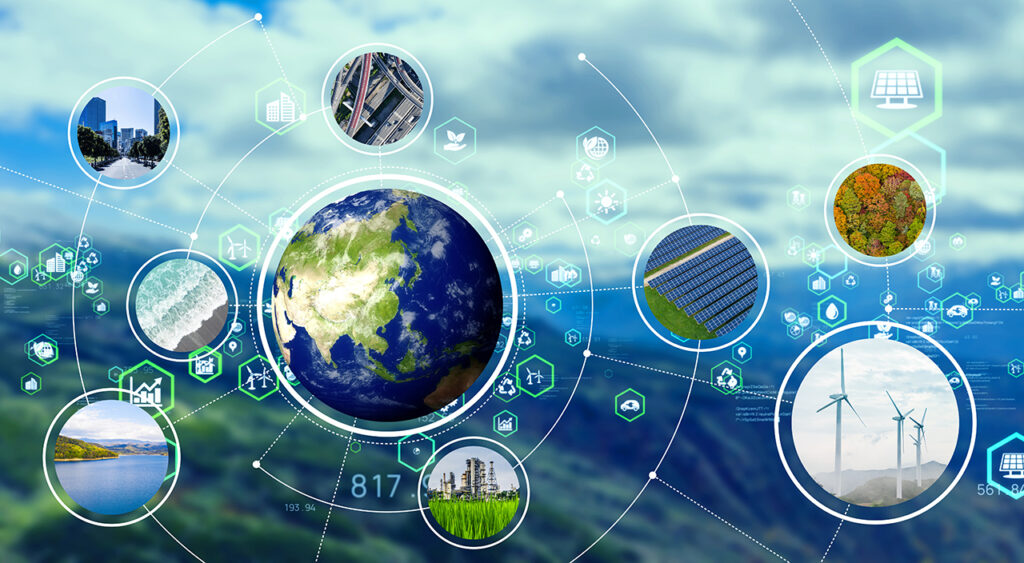Introduction
Welcome to our Blog on environmental monitoring, where we delve into the different aspects of this crucial practice that safeguards a sustainable future. Environmental monitoring plays a vital role in understanding and safeguarding our surroundings, allowing us to make informed decisions that positively impact our planet. In this article, we will explore the significance of environmental monitoring and its wide-ranging applications across various industries.

Grasping Environmental Monitoring
EM plays a pivotal role in evaluating and managing the impact of human activities on our surroundings. By continuously monitoring significant environmental parameters, we acquire valuable data that enables informed decision-making, proactive measures, and protection of our ecosystems.
The Significance of Environmental Monitoring
EM serves several pivotal purposes, including:
Assessing Environmental Well-being
Through monitoring diverse elements such as air quality, water pollution, soil composition, and biodiversity, we can evaluate the overall well-being of ecosystems.
Identifying Human Influence
Environmental monitoring aids in understanding the effects of human activities on the environment, enabling the mitigation of harmful impacts and the development of sustainable practices.
Early Detection of Concerns
By monitoring changes in environmental parameters, we can promptly detect issues like pollution, habitat degradation, and climate change, allowing for timely interventions.
Essential Elements of Environmental Monitoring
Successful EM entails the integration of various components, each playing a critical role in gathering precise and dependable data. Let us delve into some of these key elements:
Sensors and Data Collection
Sophisticated sensors lie at the core of environmental monitoring, measuring a wide array of environmental parameters. These sensors collect data on factors such as temperature, humidity, air quality, water quality, noise levels, and more. The collected data is then transmitted to a central system for further analysis.
Data Analysis and Interpretation
Once the data is collected, it undergoes thorough analysis to identify patterns, trends, and anomalies. Advanced analytical techniques and algorithms assist in comprehending the vast amount of gathered data, providing actionable insights for decision-making.
Data Visualization
Visual representation of data plays a crucial role in simplifying complex information. Data visualization tools enable the creation of charts, graphs, and diagrams that facilitate a quick understanding of the data. This visual representation helps stakeholders grasp the significance of the findings and make well-informed decisions.
Alert Systems
To ensure timely responses to critical events, environmental monitoring systems incorporate alert systems. These systems trigger notifications when predetermined thresholds are exceeded or specific events occur. This allows for prompt action to prevent or mitigate potential environmental hazards.
Data Integration and Reporting
EM data is often integrated with other systems, such as Geographic Information Systems (GIS), to gain a comprehensive understanding of the environmental landscape. This integrated data is then utilized to generate detailed reports, aiding in policy-making, compliance monitoring, and long-term planning.
Applications of Environmental Monitoring
It finds applications in a wide range of sectors and industries. Here are some notable examples:
Air Quality Monitoring
Continuous monitoring of air quality helps identify pollution sources, measure pollutant levels, and assess the effectiveness of pollution control measures. This information is crucial for public health agencies, urban planners, and industries striving for sustainable practices.
Water Quality Monitoring
Monitoring water quality in rivers, lakes, and oceans allows us to detect contamination, track changes in aquatic ecosystems, and ensure the safety of drinking water sources. It enables regulatory bodies, water treatment facilities, and conservation organizations to take appropriate measures to preserve water resources.
Climate Change Research
Environmental monitoring plays a significant role in climate change research by tracking indicators such as temperature, rainfall patterns, sea levels, and carbon dioxide levels. These data assist scientists and policymakers in understanding the impact of climate change and developing strategies to mitigate its effects.
Habitat and Biodiversity Conservation
Monitoring habitats and biodiversity provides essential insights into the health of ecosystems, assisting conservation organizations in identifying areas of concern and implementing conservation measures. It aids in protecting endangered species, preserving fragile ecosystems, and restoring degraded habitats.
Conclusion

It is a powerful tool that drives sustainability and enables us to protect and preserve our planet for future generations. By collecting and analyzing data on various environmental parameters, we can make informed decisions, minimize environmental impact, and work towards a greener future. From industrial operations to climate change research, environmental monitoring has widespread applications and is essential for achieving a sustainable and resilient world.
Remember, the path to a sustainable future commences with a profound understanding of our environment through continuous monitoring and proactive measures. Together, let us take action to preserve and safeguard the invaluable resources our planet bestows upon us.
FAQs
What are the Four Types of Environmental Monitoring?
1. Environmental Monitoring of Air.
2. Environmental Monitoring of Water.
3. Environmental Monitoring of Noise.
4. Environmental Monitoring of Biodiversity.
What are the 3 methods of environmental monitoring?
The three main types of environmental monitoring are soil, atmosphere, and water.
What are the 5 areas of environmental monitoring?
There are five main types of environmental monitoring: air, soil, water, waste, and noise, all of which are vital in providing key information about the environment.
What are tools for environmental monitoring?
1. Air and Wind Speed Measurement Instrument.
2. Carbon Dioxide Analyzer (CO2 Gas Analyzer)
3. Dew Point Generator.
4. Environmental Light Measurement Equipment. …
5. Magnetic Field Meter.
6. Methane Gas Analyzer (CH4 Analyzer)
7. Microbial Air Sampler.
8. Purge and Trap System
What are the 4 types of the environment?
The atmosphere or air, lithosphere, or rocks and soil, hydrosphere, or water, and the biological component of the environment, or biosphere, are the four basic components of the environment.
What are the benefits of environmental monitoring?
The Benefits of Environmental Monitoring:
1. Safe Food Alliance
2. Environmental Monitoring Benefits
3. Validation and verification of cleaning and sanitation programs.
4. Provides data on the overall effectiveness of your sanitary program, personnel practices, and operations procedures.
5. Provides data about indicator organisms, spoilage organisms, and pathogens to prevent outbreaks.
What are the 5 principles of environmental management?
1. The precautionary principle.
2. The prevention principle.
3. Environmental damage should be rectified at the source.
4. The polluter pays principle.
5. The integration principle.
Which sensor is used in environmental monitoring?
The most common environmental sensors are pressure and gas sensors. For the first sensor type, the stimulus is given by a defined applied gas pressure level, and for the second sensor type by a certain chemical concentration of the gas species to be investigated.
What are the 6 levels of the environment?
Levels of organization in ecology include the organism, population, community, ecosystem, biome, and biosphere.
